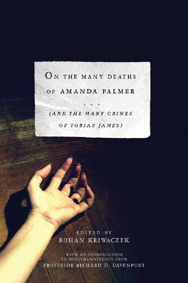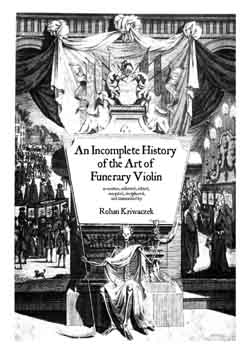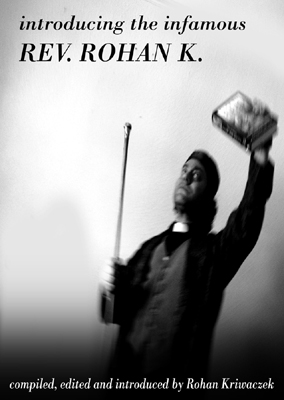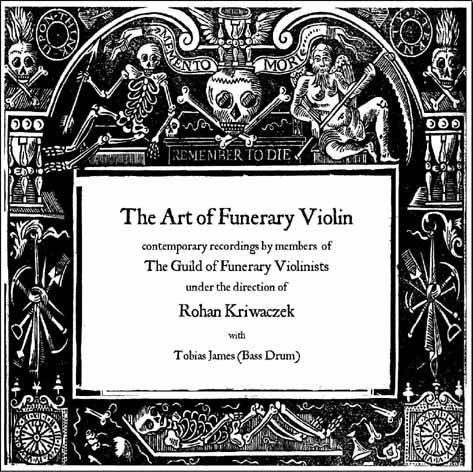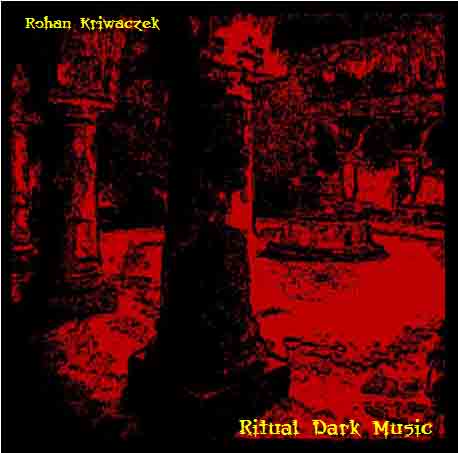to download this article as a free ebook click here
the little known jewish influence on the art of funerary violin
Over the past couple of years as I have toured Britain and America giving talks on the history of Funerary Violin I have been asked with surprising regularity if there is any major Jewish influence upon the tradition. Whether this is due to the nature of the audiences that attend my lectures, or perhaps to the superficial notion that Jewish violin music is filled with tragedy and therefore in some ways similar to the Funerary genre I cannot say, but the question is more interesting than one would expect. For, although Funerary Violin itself is profoundly steeped in European Christian Funerary practices, it has, from its very beginnings, been associated with certain notable Jewish musicians, albeit somewhat from the sidelines, without whom it probably would not have evolved into the noble Art practiced by the great masters of the late 18th and early 19th centuries. Indeed, were it not for the unquestioned reputation of Jewish musicians during the 16th century, a time when professional musicians were almost exclusively either of Jewish or Gypsy origin, it is doubtful whether the tradition would have begun at all, for it is now thought that it was they who unintentionally provided George Babcotte, founder of the Guild of Funerary Violinists, with his violin, an instrument previously unknown in England.
How George Babcotte came upon his violin was for many years one of the great mysteries of the Funerary Violin tradition, however recent scholarship has finally revealed what can at least be considered a most likely scenario. In 1540 Thomas Cromwell was sent to Italy by King Henry VIII with orders to employ a troop of high quality musicians with the intention of improving the standards of music in his court for his impending marriage to Anne of Cleves. Cromwell returned with six Jewish musicians, Alexander, Ambrose and Romano of Milan, Albert and Vincenzo of Venice and Juan Maria of Cremona, who are listed as being “performers on the viol and violin” making them the very first violinists in England. However, it was illegal to practice Judaism in England at the time and the unfortunate musicians were arrested two years later. Privy Council records dated 4th February 1542 record their apprehension by Phillip Hobbin, Sir Edward Kerne and Dr. Peter and Parish records indicate that Joseph Babcotte, George Babcotte’s father, was head jailer, and later sheriff to Sir Edward Kerne, and is known to have accompanied his master to conduct the arrests. The inventory of the goods of the individuals involved is also listed; this included 6 viols (of various sizes), 2 violins, 2 violas and a violoncello. It is worth noting that this uneven number of instruments, six viols yet only 5 members of the violin family, was not questioned at the time, but clearly suggests that an instrument may have gone missing. The first known account of George Babcotte “performyng on the vyolyn” is in 1566 in George Gascoigne’s play Supposes, at a “carnival” at Gray’s Inn, and as there were still very few violins in England, each accounted for, and belonging to the musicians of Queen Mary’s court (such an instrument would cost a princely sum (around the yearly salary of 4 serving maids and a cook)), it is a logical conclusion that this was the same instrument that was missing from the 1542 inventory.
Very little is known about specific Funerary Violinists during the following 100 years, largely due to the not inconsiderable social chaos created by the various wars across Europe during the 17th century. And indeed the essentially religious nature of funerary practice meant that the very notion of a Jewish Funerary Violinist was at best unlikely, if not an outright impossibility. By the 18th century a professional class of musicians had evolved amongst the non-Jewish people of Europe and, as a result, many Jewish musicians would hide their religious background, making it all the more difficult to track any Jewish influence upon the Art. However, in 1983 a large box of papers was discovered hidden inside a tomb in the soon to be demolished ruins of a church in Hildesheim, Germany. Now known as the Hildesheim Trunk, its contents included a hand-written Testament by Herr Hieronymous Gratchenfleiss, probably the greatest and most important of all Funerary Violinists, in which he makes passing mention of his early years, and specifically a Jewish violin teacher:
…after much begging and pestering, my father, who, though stern, was not an ungenerous man, finally agreed to send me for lessons. We were not rich, and could not afford the fees charged by Schweitzer, Wolfsburg’s violin maestro, but it seems my father had connections in the Jewish Quarter and, if my memory serves, had struck a deal exchanging my lessons for his own occasional services as a carpenter. And so it was that twice a week I made the trip across town to visit Blumenthal, an elderly and somewhat severe gentleman with a long beard, usually encrusted with the remnants from past meals. He was not a great violinist, and I recall his tone was weak by comparison with the wondrous sound that had so inspired me on hearing Kurfürstentrauerviolinistenmeister Schinker a year earlier, but his soul was truly musical, and even today I can hear the solemn tragedy of his playing as I look back upon my youth…were it not for his many severe strictures and particularly his overwhelming concern for melancholic phrasing I may not have set out upon the path which has led me where I am today… [translated from the original German]
Herr Gratchenfleiss was to become the unquestioned grand master of the art, rising to the position of Kurfürstentrauerviolinistenmeister in 1782, and his musical and spiritual vision was to expand the very concept of Funerary Violin from its earlier ritualised form into the rich and varied genre of the early 19th century. Therefore, if his comment about Blumenthal is to be taken at face value it can be said that once again the Jewish influence, though only occasional, was indeed pivotal in the evolution of Funerary Violin.
It is impossible to know how many, if any, Funerary Violinists were amongst the numbers of converted Jews or Jews who hid their Jewish identity, as records do not reveal such information, and, as has been stated, the notion of a openly practising Jewish Funerary Violinist is unlikely, however there is one known exception to prove the rule. Josef Nussbaum, a Viennese Jewish Funerary Violinist who went by the professional name of Adolf Nuß, presumably to disguise his Jewish background, was born in 1782. He first appears on record as a Funerary Violinist in 1806, as having played at the funeral of Karl Kreisky, a notable Viennese cabinetmaker. Although very little is known about his life, a number of his works have survived, and it is these that clearly demonstrate not only that he was Jewish, but that he was interested in bringing the Art of Funerary Violin into Jewish funerary practice, a somewhat misbegotten notion given the overtly stoical nature of Jewish funerals to this day. In 1819 a selection of his pieces was published by the Viennese music publisher Carlo Artaria entitled Jüdische Beerdigungbegleitungsmusik / Shtikelach tsu oysshpiln bay Yiddishe Levayes (Works for Performance at Jewish Funerals) with a preface written both in German and in Yiddish. What sets these works apart from other Funerary Suites of the period is their self-consciously Jewish narratives, which frequently refer to passages from the Torah. Amongst them is a set of two suites now known as the Plague Suites. These follow, to a large extent, the then popular pattern of the seven movement Funerary Suite, (3 marches, Dream, Flight, Panic and Eulogy) however in this case each of the inner movements is subtitled with a passage from the Torah depicting one of the plagues sent down by God upon Egypt. Only two copies of this book are known to exist today, both in the hands of private collectors, however in 1962 an original hand-written manuscript of the second Plague Suite was purchased at auction by the Guild of Funerary Violinists, and is soon to be published in its collection The Art of Funerary Violin.
By 1840 the venerable tradition of Funerary Violin was falling into decline, partly due to changes in funerary practice across Europe, and partly due to the persecution of its practitioners and repression of the form by the Catholic Church, now known as the Great Funerary Purges. Had it continued into the age of emancipation we may have seen a far greater and more open Jewish influence upon the tradition, but of course that is mere speculation. What is clear, however, is that despite the overwhelmingly Christian nature of the form it would not have evolved as it did without the occasional influence of Jewish musicians. |

